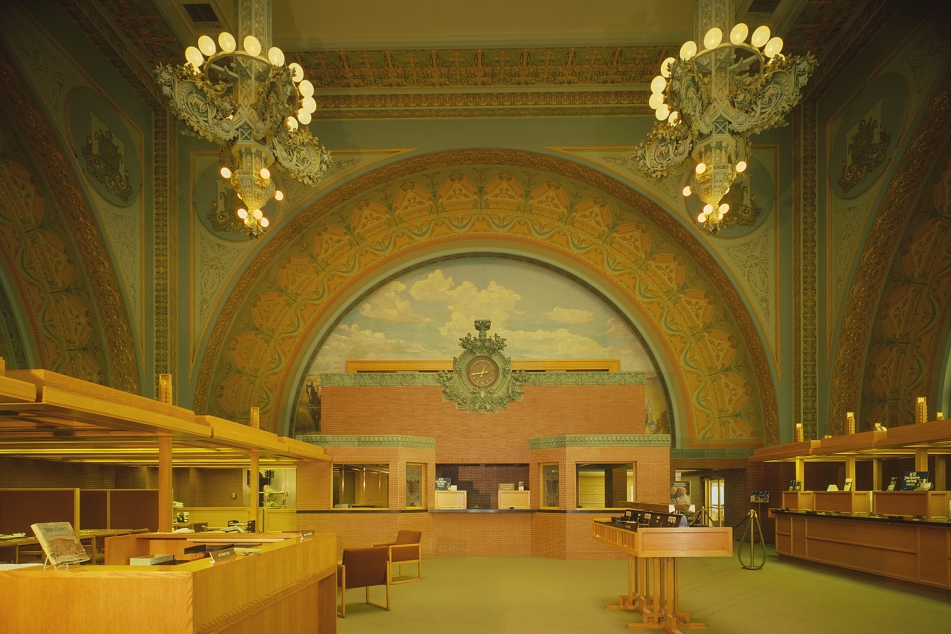On the Rural Banks
Lauren S. Weingarden

Popularly celebrated as “jewel boxes,” Louis Sullivan’s eight rural-town banks (1906-1919) were ignored by architects and scholars through most of the twentieth century. During the post-Modern 1980s, both restorationists and historians have reclaimed both the banks’ material opulence and their architect’s mastery of design. Building on her study, Louis H. Sullivan: The Banks, Lauren will demonstrate that Sullivan’s designs for the banks are the culmination of his efforts to naturalize commercial building types by what he called “Poetic Architecture.” Sullivan conceived poetic architecture within a Transcendentalist tradition wherein artforms derived from nature would have a transformative effect on the viewer/user. First realized in his skyscraper designs, comprised of geometric forms adorned with an organic ornament (literally) drawn from nature, for the banks, Sullivan designed simple brick-faced rectangular masses and contrasting hues of glazed ornament and polychromatic interior effects of glazed ornament, stained glass windows, tinted brick facing, and oak-wood furnishings. As with the commercial function of skyscrapers, Sullivan mollified the business of banking with the organic-qua-spiritual forms of nature.
Lauren S. Weingarden is Professor Emerita of Art History at Florida State University in Tallahassee, FL. Prof. Weingarden’s publications on Louis Sullivan include numerous articles and essays. She is the author of Louis H. Sullivan: The Banks (MIT, 1987); Louis H. Sullivan: A System of Architectural Ornament (Rizzoli/Wasmuth, 1990); and Louis H. Sullivan and a 19th-Century Poetics of Naturalized Architecture (Ashgate/Routledge, 2009). She has also authored numerous articles on 19th-century French modernity, as defined by Charles Baudelaire and represented by Edouard Manet. In her forthcoming book titled A Neuroarthistory of the Painters of Modern Life: Embodying Baudelairean Modernity (Routledge), she uses cognitive linguistics and neuroanatomical models to interpret the rupture and fragmentation during the Haussmannization of Paris and Second Empire France. Prof. Weingarden serves the Boards of the International Association of Word & Image Studies (IAWIS), and previously, of Nineteenth-Century French Studies (NCFS) and Interdisciplinary Nineteenth-Century Studies.
This spring’s series, entitled “Money Talks,” looks at the architecture associated with the storing, trading, management, digitization, and centralization of money. Topics will include the history of the Bank of England, the competition for a new commodity exchange in Amsterdam, the design of banknotes, the commissioning of the headquarters of one of the largest banking and financial services institutions in the world, the post-war development of London’s financial center, among others. Speakers will include Daniel M. Abramson, Herman van Bergeijk, Martin Gran, Carol Patterson, Lauren S. Weingarden, Amy Thomas, and Stephanie Williams.